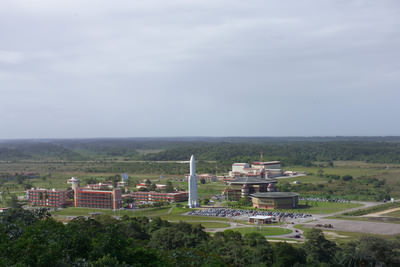[/caption] The launch of the Herschel and Planck spacecraft has been delayed from the original launch date of April 16. Right now, officials from the European Space Agency and Arianspace say the liftoff date will be delayed by a few weeks in order to carry out additional checks on the ground segment of the Herschel and Planck programs. Recent software updates for spacecraft operation procedures need to be validated. A new launch date will be announced at the end of March, but officials are hoping for time frame around April 29.
[caption id="attachment_27044" align="aligncenter" width="219" caption="Launch configuration for the Herschel and Planck spacecraft. Credit: ESA"]
[/caption]Planck, ESA's microwave observatory that will study the relic radiation of the Big Bang, while the Herschel missions will study the formation of stars and galaxies. The two will be launched together on an Arian 5 rocket.
Planck is designed to image the anisotropies of the Cosmic Background Radiation Field over the whole sky, with unprecedented sensitivity and angular resolution. It will provide a major source of information relevant to several cosmological and astrophysical issues, such as testing theories of the early universe and the origin of cosmic structure.
The Herschel Space Observatory (formerly called Far Infrared and Sub-millimetre Telescope or FIRST) has the largest single mirror ever built for a space telescope. At 3.5-meters in diameter the mirror will collect long-wavelength radiation from some of the coldest and most distant objects in the Universe. In addition, Herschel will be the only space observatory to cover a spectral range from the far infrared to sub-millimeter. During the delay, preparation of the two spacecraft for launch continues as planned at Europe's Spaceport in Kourou, French Guiana.
Source:
ESA
 Universe Today
Universe Today
